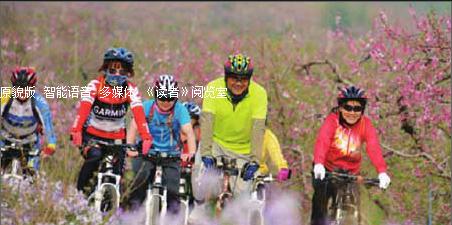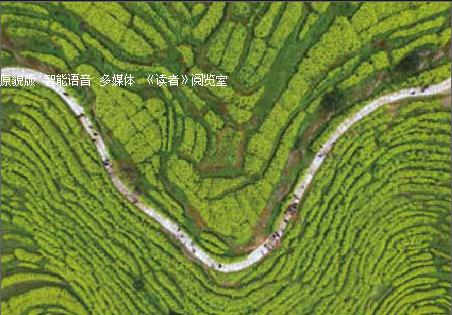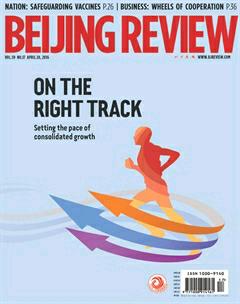Tourism Grows on Trees
2016-05-04ByLiNan
By+Li+Nan


Guo Jie, a 24-year-old vendor selling cold rice noodles, set out for Beizhai, a village in east Beijings Pinggu District, at dawn.
“Customers to my stall double during the flowering season,” Guo told Beijing Review. For the next two months, she will migrate to the countryside where the flowers are in full bloom. Beizhai, full of apricot blossoms and bursting with tourists from April, is her first stop.
Pinggu, bordering north Chinas Tianjin Municipality and Hebei Province, boasts 10,000 mu (667 hectares) of apricot trees and 220,000 mu (14,677 hectares) of peach orchards. Thanks to the rows of colorful flowers in April, the district has become a popular weekend destination.
“I often take my family on excursions to Pinggu. Sometimes we spend the weekend in rural homestays,” Cai Hui, a 34-year-old Beijinger, told Beijing Review.
Pinggu is not alone in the flowering sea- son to see a rush of visitors. As flowers are awakened by spring, a flower-viewing craze sweeps China. Rapeseed flowers in Wuyuan County, south Chinas Jiangxi Province, peach blossoms in Nyingchi, southwest Chinas Tibet Autonomous Region, and cherry blossoms in Beijings Yuyuantan Park are all crowd-pullers.
Flower travel rush
A total of 100,000 visitors enjoyed the flowers in Yuyuantan Park on March 23, the first day of the annual cherry blossom festival that lasted nearly a month. According to the Beijing Municipal Administration Center of Parks, more than 1 million tourists visited the 11 city parks on the first weekend in April.
Wuyuan has also witnessed a flower travel rush since late February, when the rapeseed buds began to blossom. Since March 12, the Wuyuan High-Speed Railway Station has added four extra trains every weekend to carry surging tourists. The tourist numbers amounted to 6,092 and 10,133 on March 13 and 20, respectively—the period when rapeseed flowers are in full bloom. The flow was much larger than the 2016 Spring Festival travel rush, when 3,600 passengers passed by in one day.
Flower-viewing has become a popular leisure activity. Some even fly to Japan and South Korea, as well as the Netherlands to enjoy the blooms.
One factor contributing to the zeal is the improved transport network in China. According to the Ministry of Transport, the total mileage of Chinas railways by the end of 2015 amounted to 120,000 km. For roads, the figure was 4.57 million km and for waterways, 13,600 km. Eighty-one percent of west Chinas villages are accessible by road. Also, the number of airports has increased to 214. The convenience of these new networks makes more and more flower fields in rural areas accessible—witness the jump in flower viewers in small towns and remote villages in recent years.

Further contributing to the rush is the trend of Chinese people seeking a more relaxed life. To alleviate work pressure, many people tend to reinstate traditional family life, according to Zhu Shanjie, a research fellow at Shanghai University. Spending weekends with family members and friends in the open air is a good way to spend time.
Rural upgrading
The tourist surge brings huge business opportunities to rural areas. Besides flowers, local cuisine, farm produce, handmade crafts and folk culture are also popular with tourists. Developing flower-driven agritourism has taken a new path to upgrade traditional industries.
“The tertiary industry is expected to make up half of Pinggus GDP by 2020,” Wang Chengguo, Party Secretary of the Pinggu District, told Xinhua News Agency. Promoting leisure tourism, especially agritourism, is one way to achieve this goal.
The Pinggu Government invested more than 10 million yuan ($1.55 million) in Beizhai Village to build an apricot farm. Tourists can enjoy a wide variety of activities there, cycling through the apricot fields, visiting the fruit-processing plant, buying produce direct from farm stands, picking fruit, feeding animals, fishing and staying on the farm. Four parking lots with a total capacity of 600 vehicles were built to welcome tourists with cars.
Old farm houses have been redecorated and transformed into farmstays, making accommodation within reach for flower viewers. The income of villagers has increased. “All the eight guest rooms in my house are full in the flower season. I even receive more than 300 diners a day. And the average spending per person for a dinner here is 30 yuan($4.64),” said the 30-year-old owner of a farmstay surnamed Feng in Beizhai. His daily income is estimated to be more than 10,000 yuan ($1,548).
Diverse cultural activities are held in Pinggu, including the annual Peach Blossom and Music Festival, acrobatic performances, traditional lion dancing competitions, the Taoist Culture Festival, and collection fairs, which are also a great attraction for visitors.
The 18th Pinggu International Peach Blossom and Music Festival, themed Relaxing in Waves of Flowers, is being held from April 1 to May 31 this year—the longest in its history. Pop singers and 10 bands from home and abroad will perform in the China Music Village during the three-day May Day holiday. The first low-altitude flights in the BeijingTianjin-Hebei region have given tourists the opportunity to have a birds-eye view of the worlds vastest peach field.
Pinggu is not the only place to have an eye on agritourism. In fact, developing agritourism is seen as a way to alleviate poverty and has been high on the Central Governments agenda in recent years. “By developing rural tourism, China is expected to lift 2 million rural residents out of poverty every year till 2020,” says a guideline on promoting tourism investment and consump- tion released by the Central Government in August 2015.
Many provinces have rolled out agritourism development plans. For example, east Chinas Anhui Province is to develop agritourism in 300 impoverished villages, lifting 400,000 villagers out of poverty in the next five years. Southwest Chinas Guizhou Province, with the largest population below the poverty line in the country, will provide special funds to develop rural tourism.
Rural tourism has become a hot area for investment. According to a statement released by the China National Tourism Administration on April 9, investment in this industry in the first quarter of 2016 amounted to 30.25 billion yuan($4.68 billion), taking up 8.3 percent of all tourism investments in the same period.
Fallouts
However, as the flower fields are flooded with tourists, problems also arise. “The capacity of some destinations is insufficient to serve the surge of flower viewers,” Ge Mu, Assistant President of Caissa Tourism Agency, told Beijing Review. “Traffic jams in scenic spots—usually small villages—are frequently seen. The lack of guideposts makes the problem worse and the shortage of parking lots is another headache.”
To address these problems, local governments have come up with some measures. The Pinggu Government has announced several flower-viewing routes through the media, and set up guideposts at the exits of the BeijingPinggu Expressway, advising tourists to choose different options. Besides newly built parking lots, the local outdoor peach fair venue is used as a temporary parking lot.
“Traffic flow information is updated in real time via radio and the Internet during the flowering season,” Ma Chunjiang, Director of the Information Office of the Pinggu Government, told Beijing Review.
Lack of training is another bottleneck for developing rural tourism, according to Zhang Beiying, Vice President of the International Leisure Industry Association. Most farmstay owners, usually farmers, are not familiar with room service and health and safety standards. For sustainable development of rural tourism, training of personnel is needed.
The good news is that some provinces have started such training. Southwest Chinas Guangxi Zhuang Autonomous Region provided the first training workshop for 100 farmstay owners and administration staff from 13 regions in March, teaching them how to better run their business, and how to offer differentiated service and agritourism products.
